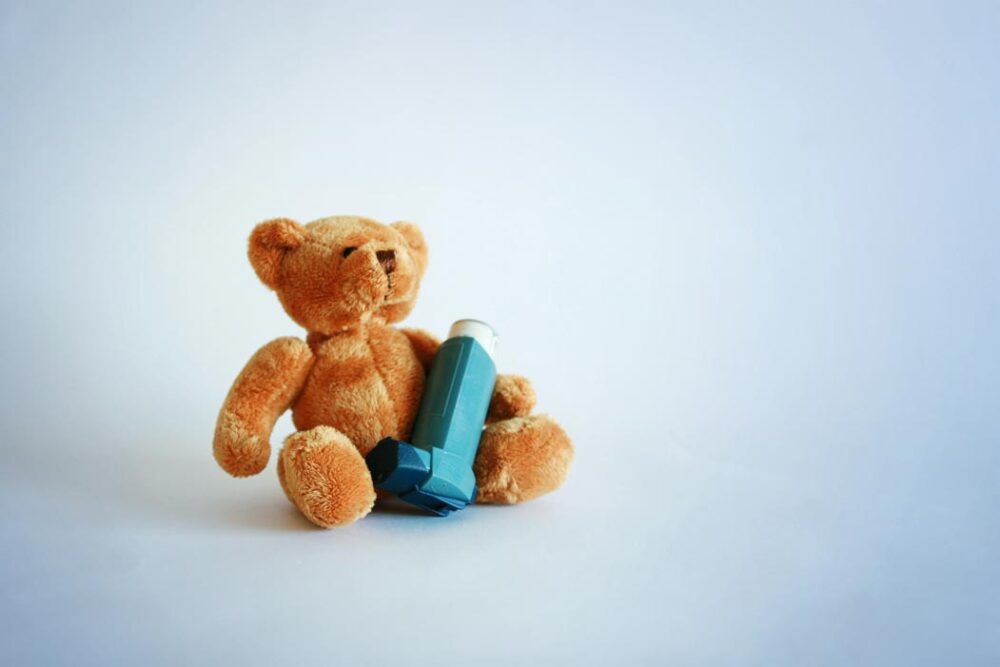Advertisment
High exposure to everyday chemicals linked to asthma risk in children

A new study from researchers at Kumamoto University sheds light on a potential link between exposure to certain everyday chemicals during pregnancy and the development of asthma in children. The study analyzed data from over 3,500 mother-child pairs as part of the Japan Environment and Children’s Study (JECS), a large-scale nationwide research project.
Key Findings:
- High levels of butylparaben, a chemical commonly used in personal care products like lotions and shampoos, during early pregnancy were associated with a 1.54-fold increase in the odds of asthma development in children (Odds Ratio: 1.54).
- Exposure to 4-nonylphenol, a chemical found in some cleaning products and plastics, showed a striking gender-specific effect. Boys born to mothers exposed to this chemical had 2.09 times higher odds of developing asthma, while no such association was observed in girls.
What Are Phenols? Phenols, including parabens and alkylphenols, are widely used in consumer products for their preservative and antimicrobial properties. While their use is considered safe in small amounts, their potential as endocrine disruptors raises concerns about long-term health effects, such as the recent increase in allergenic diseases such as asthma, particularly during sensitive periods like pregnancy.
The Study: Led by Dr. Shohei Kuraoka and his team at Southern Kyushu and Okinawa Unit Center of Japan Environment and Children’s Study, researchers measured 24 types of phenols in urine samples collected from pregnant women. They then tracked the health of their children until the age of four. The findings highlight the importance of understanding how everyday chemical exposures might contribute to respiratory and allergic conditions in children.
Implications for Public Health: “These results emphasize the need for careful evaluation of chemical exposure during pregnancy,” said Dr. Kuraoka. “Understanding these risks allows us to develop better guidelines to protect maternal and child health.”
While the study provides groundbreaking insights, the researchers acknowledge limitations, such as not measuring phenol levels in children directly. Future studies will aim to explore these mechanisms further and establish safe exposure thresholds.
A new study from researchers at Kumamoto University sheds light on a potential link between exposure to certain everyday chemicals during pregnancy and the development of asthma in children. The study analyzed data from over 3,500 mother-child pairs as part of the Japan Environment and Children’s Study (JECS), a large-scale nationwide research project.
Key Findings:
- High levels of butylparaben, a chemical commonly used in personal care products like lotions and shampoos, during early pregnancy were associated with a 1.54-fold increase in the odds of asthma development in children (Odds Ratio: 1.54).
- Exposure to 4-nonylphenol, a chemical found in some cleaning products and plastics, showed a striking gender-specific effect. Boys born to mothers exposed to this chemical had 2.09 times higher odds of developing asthma, while no such association was observed in girls.
What Are Phenols? Phenols, including parabens and alkylphenols, are widely used in consumer products for their preservative and antimicrobial properties. While their use is considered safe in small amounts, their potential as endocrine disruptors raises concerns about long-term health effects, such as the recent increase in allergenic diseases such as asthma, particularly during sensitive periods like pregnancy.
The Study: Led by Dr. Shohei Kuraoka and his team at Southern Kyushu and Okinawa Unit Center of Japan Environment and Children’s Study, researchers measured 24 types of phenols in urine samples collected from pregnant women. They then tracked the health of their children until the age of four. The findings highlight the importance of understanding how everyday chemical exposures might contribute to respiratory and allergic conditions in children.
Implications for Public Health: “These results emphasize the need for careful evaluation of chemical exposure during pregnancy,” said Dr. Kuraoka. “Understanding these risks allows us to develop better guidelines to protect maternal and child health.”
While the study provides groundbreaking insights, the researchers acknowledge limitations, such as not measuring phenol levels in children directly. Future studies will aim to explore these mechanisms further and establish safe exposure thresholds.





